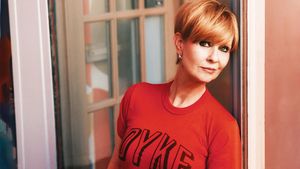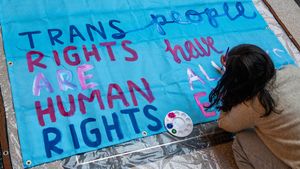If you’re already frustrated about the wage gap, here’s a bit more bad news. The pink tax, which refers to extra costs tacked onto products and services marketed to women, is yet another hurdle women face when it comes to economic prosperity. Those of us who got involved in #PinkTax discussions on social media in 2015 were already well aware of just how costly “women’s products” are, but a recent study from the Department of Consumer Affairs, “From the Cradle to the Cane: The Cost of Being a Female Consumer”, confirms what we already suspected: gender pricing is a serious problem.
The study analyzed a total of 794 products from 91 brands, 24 stores, 5 industries, and 35 product categories. On average, across all five industries, the Department of Consumer Affairs found that women’s products cost 7 percent more than similar products for men. Although, in the case of these similar button up shirts, the pink tax is much more egregious.
If 7 percent doesn’t sound like a lot to you, the DCA’s study concluded that over the course of a woman’s lifetime, she will pay thousands of dollars more to purchase similar products as men. (If thousands of dollars doesn’t sound like a lot to you, well…good for you then.)
The study really does mean over the course of a woman’s entire lifetime. The DCA analyzed everything from children’s clothing to adult diapers (and yes, adult diapers are gendered). In an example from the study, Rite Aid’s Bladder Control Pads for Women retailed at the same price as Rite Aid’s version for men, but men received 52 bladder control pads for their money, as opposed to women’s 39 count.
When broken down by categories, a woman will pay 7 percent more for toys and accessories, 4 percent more for children’s clothing, 8 percent more for adult clothing, 8 percent more for senior/home health care products, and a whopping 13 percent more for personal care products throughout her life.
While men’s and women’s products are rarely identical, making exact comparisons difficult, the DCA chose products that were as close in “construction, ingredients, textile, appearance, description, and/or marketing” as possible. The products studied were all currently available in the marketplace, which means the study accurately reflects what is available for men and women consumers.
If you want to get involved in the discussion about the gender pricing gap, the DCA is encouraging consumers to respond on social media by tweeting their thoughts with #genderpricing. You can also read the complete study here. All images are courtesy of the New York City Department of Consumer Affairs, and more comparisons between men's and women's products can be found in the study.
Have you noticed the pink tax before? What items are you tired of paying more for? Let us know below.































































































































